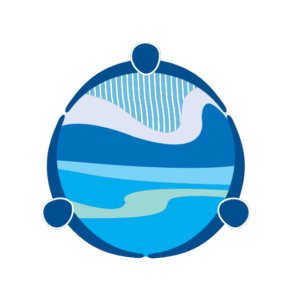History
The KEAC held its first meeting on January 30–31, 1980, in Kuujjuaq. The chairperson was Jean Piette, a Québec-government appointee. Michael Barrett, a current KEAC member, was also present as a Kativik Regional Government appointee. Items of the agenda included the KEAC mandate, internal management procedures and set-up of a secretariat in Kuujjuaq. One of the initial files on the KEAC agenda was the proposed Great Whale hydroelectric complex, which the KEAC continued to closely monitor until the 1990s. Other topics on the agenda covered waste management and related information sharing, as well as public participation in the assessment of development projects in the north. These topics are still key KEAC concerns today.
Other important issues that have been reviewed by the KEAC throughout its history include: Mid-Canada Line radar sites, the mass caribou drowning on the Caniapiscau River in 1984, the closure and restoration of the Asbestos Hill mine site (location of the KEAC’s 5th meeting in 1980), the creation of parks and protected areas, the review of schedules 1 and 2 of Section 23 of the JBNQA, the rehabilitation of abandoned mineral exploration sites, renewable energy and mining projects, as well as drinking water quality. To learn more about KEAC work on these issues, consult the following sections of this website: Briefs and position papers and Our Work.
Since its inception, the KEAC has held over 160 meetings. It remains a relevant and effective forum for the governments of Canada and Québec, the Kativik Regional Government, other regional organizations, as well as Inuit and Naskapi communities regarding the environmental and social protection regime under the JBNQA. Minutes of all KEAC meetings are available here.
Throughout its 40-year history, the KEAC has been privileged to have a diverse membership and dedicated staff.
MEMBERS
Kativik Regional Government
Michael Barrett, 1980-1990, 1999-present
Jobie Katchaka, 1980-1981
Willie Makiuk, 1980-1981, 1985-1987
Lizzie Epoo-York 1981-1985
Marc Voinson, 1982-1984
Tommy Grey, 1984-1991, 1999
Jimmy Mark, 1987-1989
Sakiriasi Nappatuk, 1989-1990
Bruno Débois, 1991-1996
Lizzie Kukula, 1990-1991
Adamie Kalingo, 1991, 2009-2013
Claude Gilbert, 1991-1997
Paul Okituk, 1992
Philippe DiPizzo, 1993-1996
Michael Gordon, 1996-1998
Willie Gordon, 1996-1998
Larry Watt, 1998
Muncy Novalinga, 1999-2001
David Okpik, 2000-2009
Eli Angiyou, 2001-2009
Charlie Arngak, 2009-2012
Betsy Palliser, 2013-2016
Joseph Annahatak, 2014-2016
Laina Grey, 2016-2019
Mary Pilurtuut, 2017-2022
Tunu Napartuk, 2020-2023
Raymond Mickpegak, 2023-present
Minne Grey, 2023-present
Government of Québec
Jean Piette, 1980-1984
Gilles Coulombe, 1980-1981
Jacques Giguère, 1980-1993, 1994-1996
André Dicaire, 1981-1984
Robert Langlais 1984-1985
Louis Cossette, 1984-1988
Claude Delisle, 1988-1992
Guy Tanyan, 1988-1993
Benoit Robitaille, 1992-1996
Noëlle De Roo Lemos, 1994-1996
Louise Fillion, 1996-1998
Renald Chabot, 1996-1999
Gérard Duhaime, 1997-2001
Paule Halley, 1999-Present
Hélène LeBlond, 1999-2003
Jean Couture, 2001-2010
Denyse Gouin, 2004-2005, 2010-2012
Sylvie Létourneau, 2006-2020
Julie Samson, 2013-2020
Vanessa Chalifour, 2020-2023
André-Anne Gagnon, 2021-present
Jasmin Bergeron, 2024-present
Government of Canada
Normand Lafrenière, 1980-1982
Jean-Claude Dubé, 1980-1987
Olav H. Laken, 1980-1981
Camille Mageau 1981-1987
Augustin Lebeau 1982-1983
Ginette Lachance 1983-1985
Pierre Marchand 1985-1991
Yvon Vigneault 1987-1992
Hubert Marcotte, 1991-1993
Jean-Guy Charest, 1989-1993
François Lemire, 1993-1996
Pierre Lauzon, 1994-1995
Pierre Paulhaus, 1994-1997
Yves Désilets, 1995-2002
Raymond Vlas, 1997-1998
Claude Abel, 1998-2016
Robert Fibich, 2000-2001
Danielle Baillargeon, 2001-2002
Suzanne Larochelle, 2002-2007
Gilles H. Tremblay, 2002-2013
Marc Lafontaine, 2007
Chantal Leblanc-Bélanger, 2008
James Yantha, 2009-2010
Thessa Girard-Borgouin, 2011-2014, 2015
Line Choinière, 2013-2015
Caroline Girard, 2014 and 2020-2022
France Roussel, 2015
Jean-Yves Savaria, 2015-2019
Alexandre-Guy Côté, 2016-2023
Catherine Lapeyrie, 2017-2019
Megan Williams, 2020-2021
Mélanie Laflèche, 2020-2021
Marie-Noëlle Fournier, 2022-present
Marc-Antoine Giroux 2023-present
Tina Graveline, 2023
Pierre-Yves Gagnon, 2023-present
STAFF
Executive Secretary
Carole Gagné-Gervais, 1980
Marc Voinson, 1980-1982
Hervé Chatagnier, 1982-1987
Philippe DiPizzo, 1987-1991
Karen Rosen, 1992-1994
Jacques Lacroix, 1994-1997
Michael O’Neill, 1997-2000
Nathalie Girard, 2002-2005, 2010-2011
Nancy Dea, 2005-2009, 2011-2012
Gregory Brown, 2009
Stéphanie Benoît, 2009-2010, 2012-2013
Benjamin Patenaude, 2013-present
Environmental Analyst
Nancy Dea, 2012-2013, 2015-2016, 2017-present
Stéphanie Benoît, 2013-2014, 2016
Policy Analyst
Annie Lamalice, 2019-2022
Christine Lambert, 2022-present
LOGO

The KEAC adopted a logo in 2005. The centre is an abstract image of certain elements of the environment (the earth, the sea and the sky), the sources of Inuit and Naskapi traditions. The rippling present in the upper portion of the circle suggests northern lights, an intrinsic symbol of the north, while the horizontal white line through the centre represents snow and ice. This central image is embraced by three human-like forms with outstretched arms. Each form represents one of the three administrative bodies that comprise the KEAC: the Kativik Regional Government, the Government of Québec and the Government of Canada. These human forms evoke the efforts of all to protect the environment in Nunavik and the social aspect of the KEAC’s work. The colour blue in the logo represents the arctic climate that prevails in the region in which the KEAC exercises its mandate. Finally, the blue and white colours of the KEAC logo are similar to those of the logo for the JBNQA, a principal element in the history of Nunavik and pursuant to which the KEAC was created.